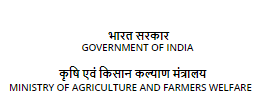Portable Meat Production and Retailing Facility (P-Mart) for Sheep and Goats
Background:
Sheep (Ovis aries) and goats (Capra hircus) contributed about 8.36 and 13.53% respectively to total meat production in India in the year 2018-19. Most of the meat from sheep and goats is produced in the service abattoirs (slaughterhouses) provided by the local bodies (Corporations, Municipalities and Gram panchayats). Generally, abattoir facilities provided by the local bodies are in poor hygienic condition. Even where the modern abattoirs have been established by the local bodies they are not used to full potential due to cost incurred on transportation of animals and meat. While service abattoirs suit the requirement of large scale meat producers, many of the small scale meat producers and retailers generally do not avail the centralized facility. This is leading to a situation wherein meat is produced under many unregistered slaughter premises without proper hygienic facility and the waste disposal mechanism. Further, meat retailing is done unscientifically by hanging the carcass in open which leads to contamination and often endangers the safety of consumers.
Due to the preference of consumers for hot meat rather than chilled/frozen meat, small scale meat production and retailing practices are proliferating across the country. There is a need for an innovative intervention to achieve hygienic meat production and retailing in small scale operations. This is more in need in view of the stringent guidelines of Food Safety and Standards Authority of India (FSSAI), as per which producing meat under hygienic condition is mandatory. Portable Meat Production and Retailing facility (P-MART) is an effort to address the issue of hygienic meat production in small scale operations (up to 10 animals). It is an environment friendly facility with zero discharge, takes care of the animal welfare and provides required facilities for hygienic meat production.
Technology Details:
The Portable Meat Production and Retailing Facility (P-MART) has five facilities viz., resting facility, slaughtering and dressing facility, meat cutting and packaging facility, meat retailing facility; and waste management facility. Except waste management facility, remaining four units are wheeled which enables easy movement of the facilities. Brief details of each of the units are given below:
Resting facility: Sheep and goats are brought from lairage and allowed them to take rest in this unit prior to slaughter. Animal must be rested adequately prior to slaughter and any preslaughter stress activates the animals' hypothalamic-pituitary-adrenal activity, triggering release of various stress hormones such as catecholamines and cortisol, thus glycogen depletion prior slaughter, elevated ultimate pH and poor muscle-meat conversion (Yonela and Voster, 2017). The unit has two floors of 16 sft each for providing rest to the animals. There is a provision for feeding, watering, recording of the body temperature, lighting, water storage and tray for collection of the droppings. Antemortem examination by a registered veterinarian can be undertaken in this unit by either online or offline mode.
Slaughtering and dressing facility: This unit has the facility for stunning, bleeding, hoisting and dressing of the carcass. These is a provision for electrical stunning, stainless steel knives, nylon cutting board, gambrel, hanging balance, drinking water storage, water sprayers for cleaning carcass, water storage unit and provision for storage of skin and waste. Further, LPG cylinder with burner is provided for singeing of the head and legs. Steel tray has also been provided for collection of the blood and the wash water. A separate container is provided for collection and processing of the gastro intestinal tract content from the animals. Post mortem examination of the animal can be undertaken in this unit by a registered veterinarian online or offline mode.
Cutting, deboning and packaging facility: This unit provides the required facility for cutting of the carcass, electrical bone cutter, deboning, cubing, weighing and packaging of the meat in steel boxes. These is a provision for collection of bones, meat and storage of water. Tray has been provided for collection of the liquid waste produced after washing of the carcass and surface. Meat is packed and sold in stainless steel boxes.
Meat retailing facility: This unit has seating arrangement for the retail personnel, provision for storing of the steel boxes filled with meat, refrigerator, platform weighing balance, generator, first aid kit and provision for the display of different licenses and permits. Meat is allowed to stay in ambient temperature for sale for only two hours after slaughter. After two hours, unsold meat can be stored in refrigerator. First aid box and FM radio have been provided in the retailing unit. A white board is provided wherein all the details of animal slaughtered are displayed. If any consumer wants to see the image of the live animal from where meat is derived, the image can be made available which is a one step backward traceability. The facility can be operated with AC current. Electric meter is provided for reading the units. It can also be operated with generator which is installed in Unit 4.
Animal welfare: In P-MART, these is a provision to ensure welfare of the slaughter animals. Live sheep and goats are accommodated in the resting area for comfortable stay during the period of waiting. Sheep and goats in resting area can comfortably sit and stand as per their convenience. Drinking water is provided ad libitum. Provision for feeding is also provided for which can be used to feed the animals, if required. Live animals in lairage will not see the slaughter and dressing of the other animals. Electrical stunning facility is also provided to avoid pain and suffering during slaughter of the animals. These provisions ensure the welfare of the slaughter animal.


